Rafee Mahmud, an architect by profession, sees his art as a medium for meditation that circumvents extreme emotion. Manoeuvring his way through his desire to paint, the Bangladesh University of Engineering and Technology (BUET) graduate has been the recipient of numerous regional, national and international awards.
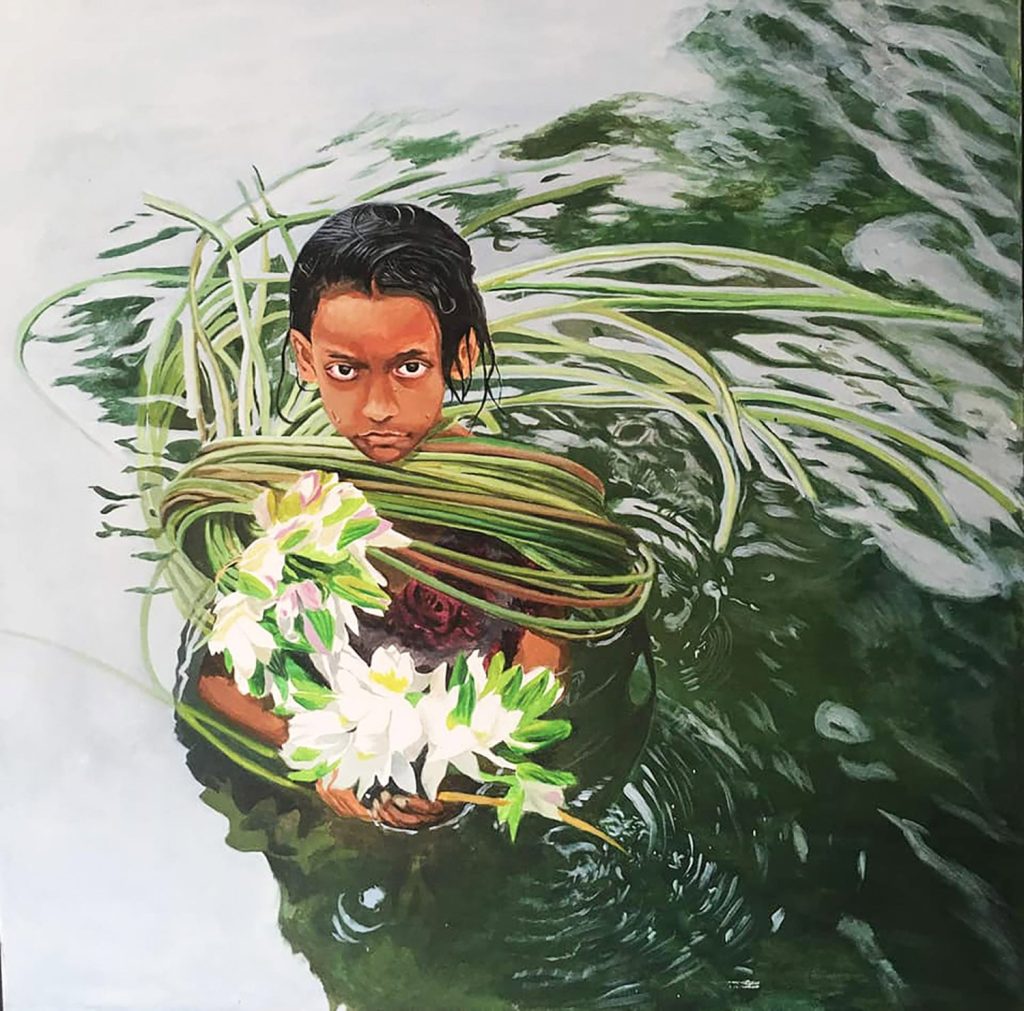
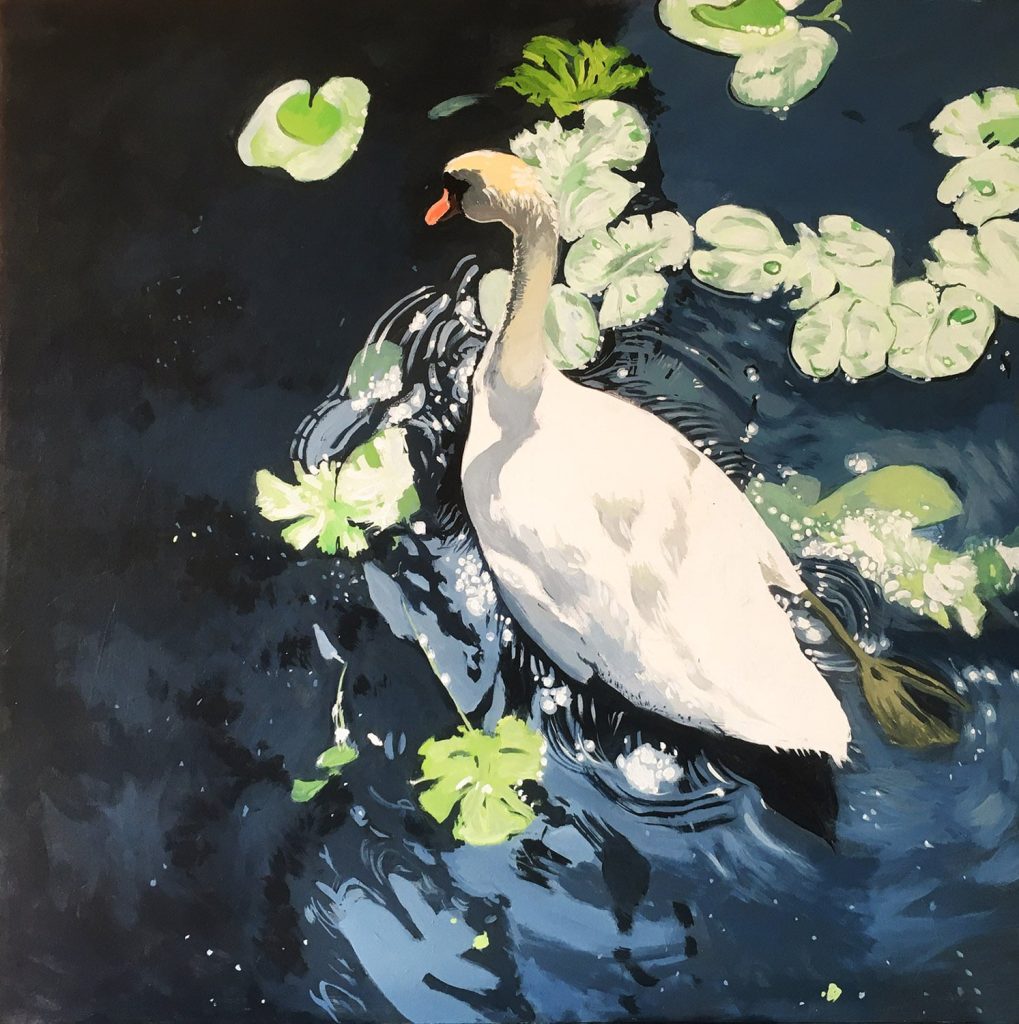
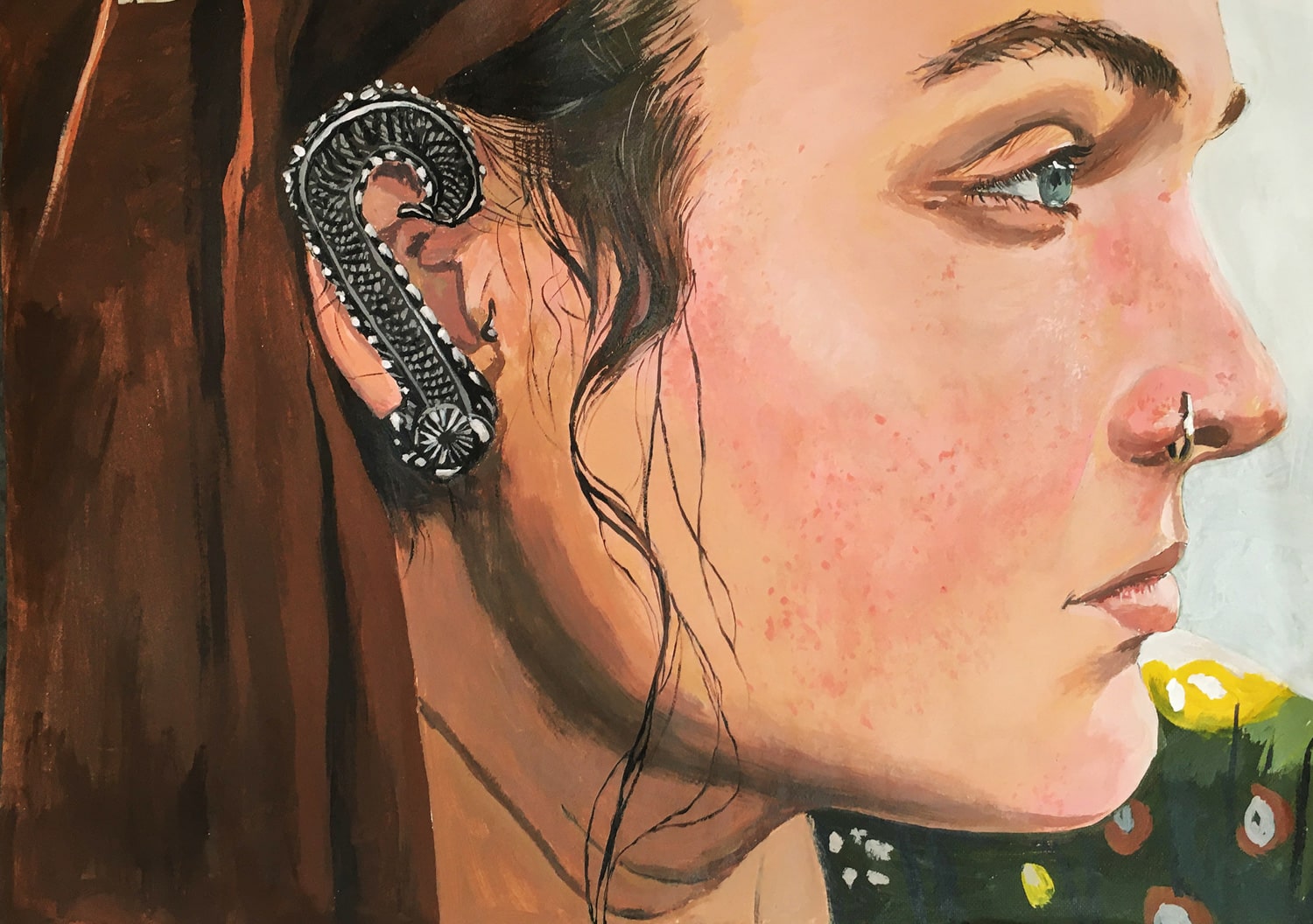
Rafee Mahmud states, “My two older brothers had a habit of drawing, I began to do the same, imitating them. My father was a government school teacher, I spent my childhood at a quarter called Mehedibag Government Colony at Chittagong. When I used to visit the war cemetery near my home, I discovered a government art college not too far off. I sat mesmerised watching the students of the college as some were doing pencil sketches and others were using watercolour. I gained knowledge of techniques by continuing to observe them.”
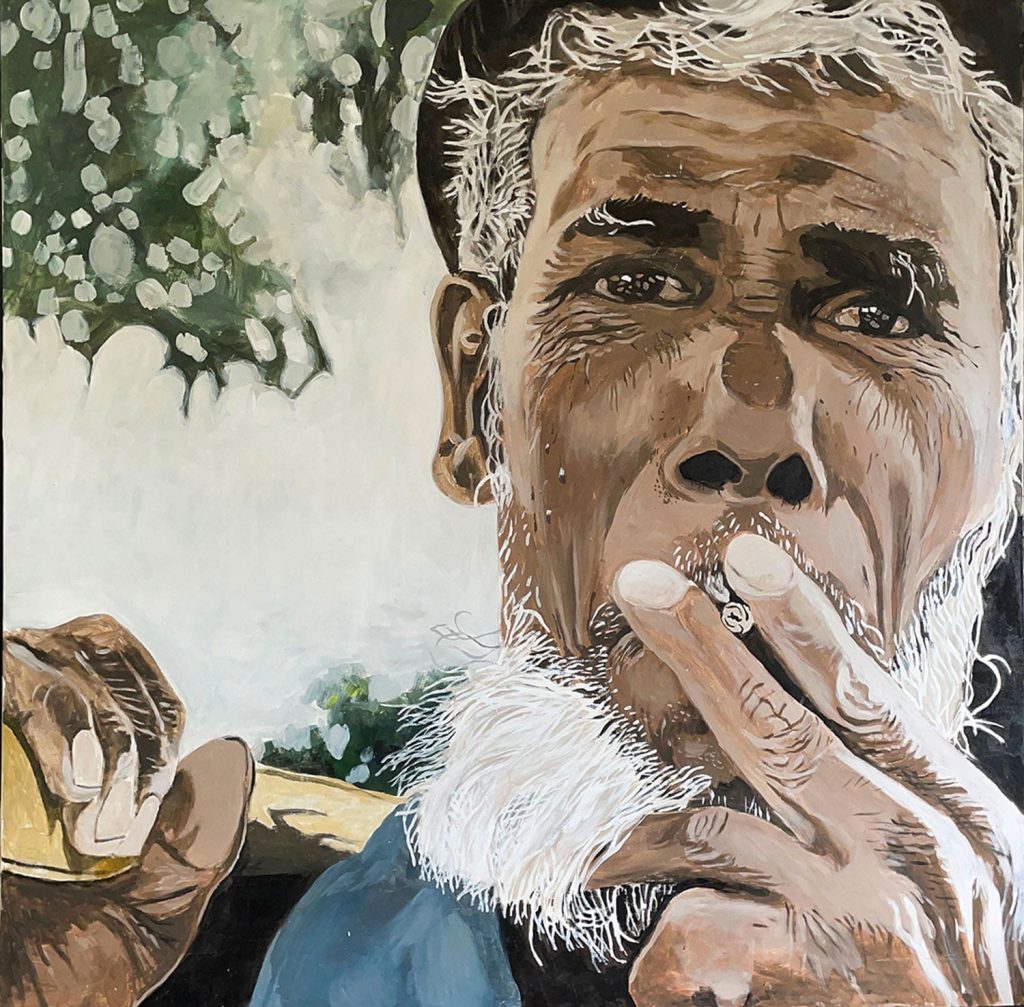
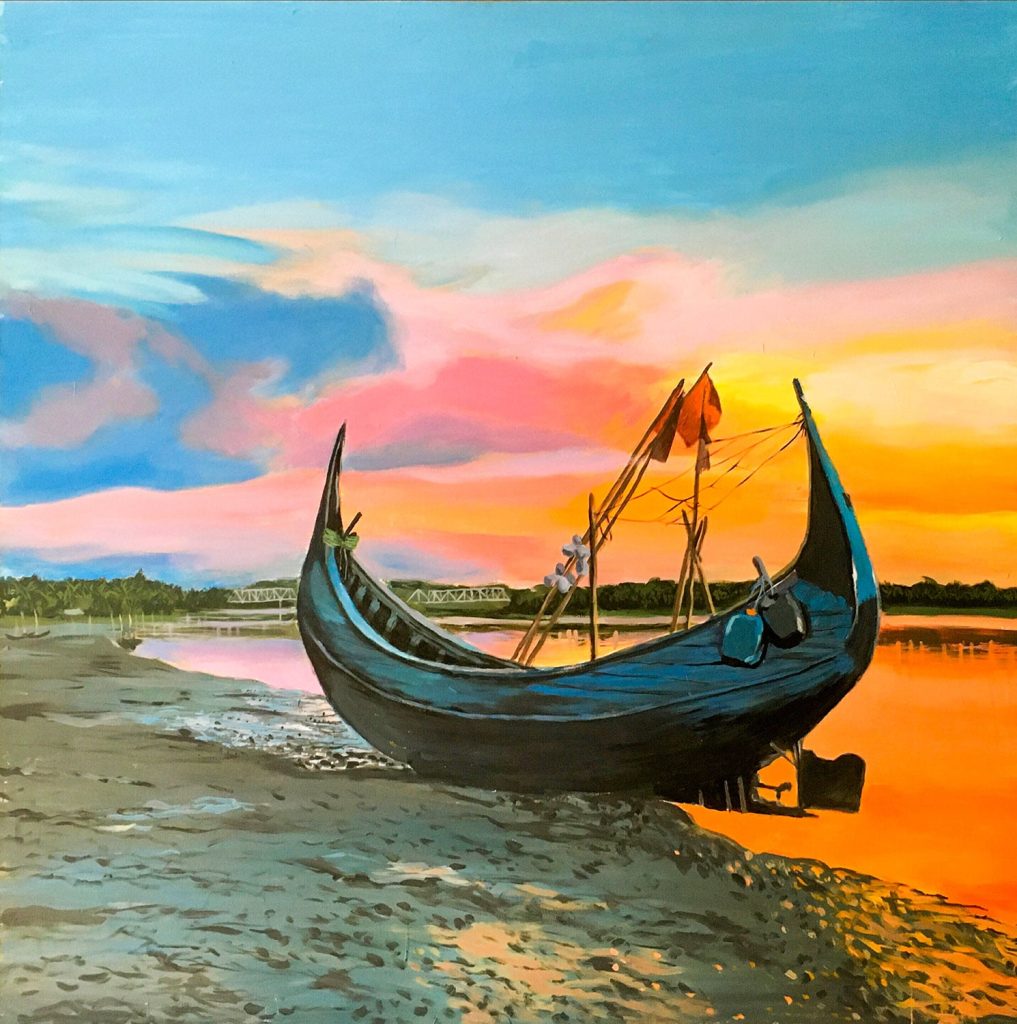
While at school, Mahmud was drawn towards illustrations by Hashem Khan and Rafiq Un Nabi in Bangla books, however as he grew older, academic pressure forced his passion for art onto the sidelines until 2019. Now the artist and architect splits his time between his two professions through freelance.
Citing the time during the lockdown caused by the pandemic as a catalyst for reentering this field of interest the artist states, “During such times of extreme emotional turmoil, I wanted to paint something which I found to be deeply calming. I wished to recreate the tranquillity attained by man in the deepest stages of meditation on a canvas. A teacher of mine, Architect Mahmudullah Riyaad sir, having seen my work through a class project had previously advised me to paint on a larger scale. I found this to be the perfect time to execute his suggestion.”
Intertwined with the creative aspects offered by the internet, Rafee Mahmud credits some of his techniques to online tutorials. Continuing this relationship, Mahmud often posts the entirety of his creative process through videos online.
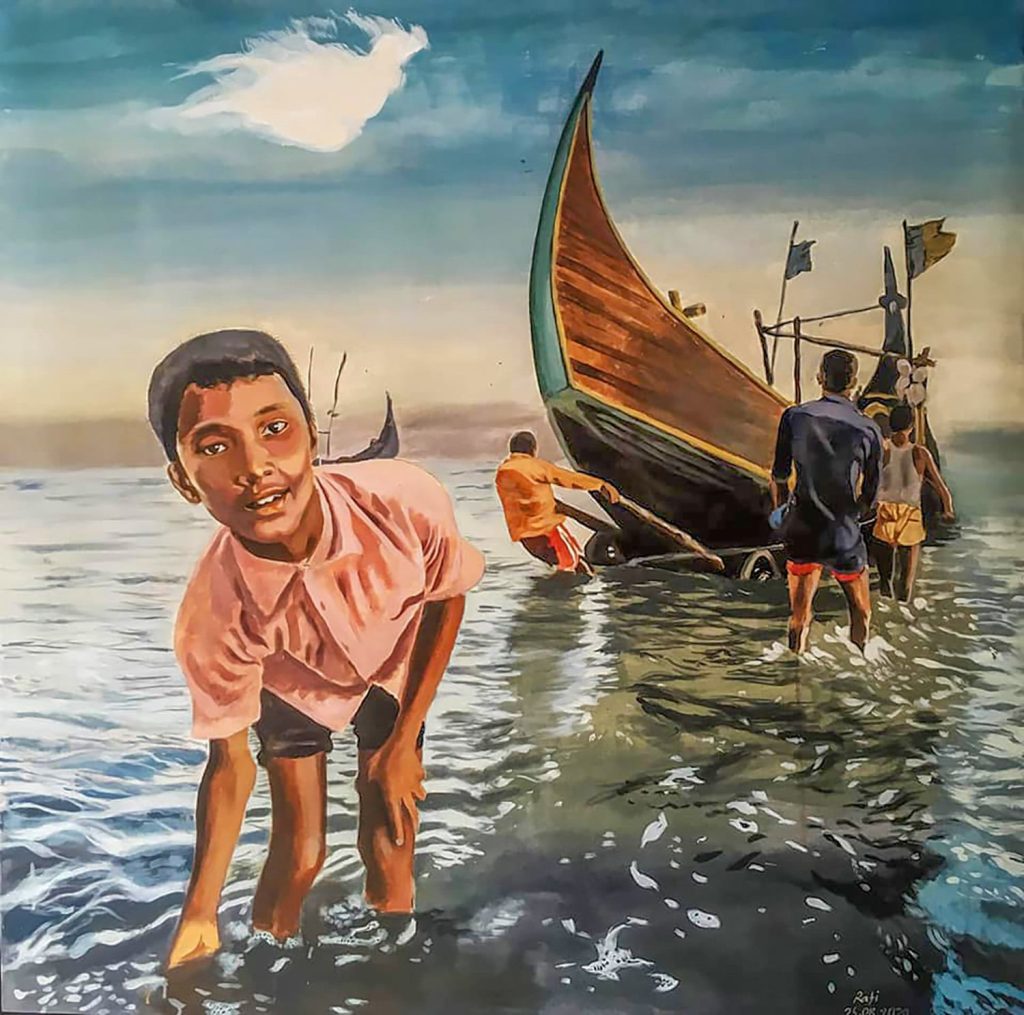
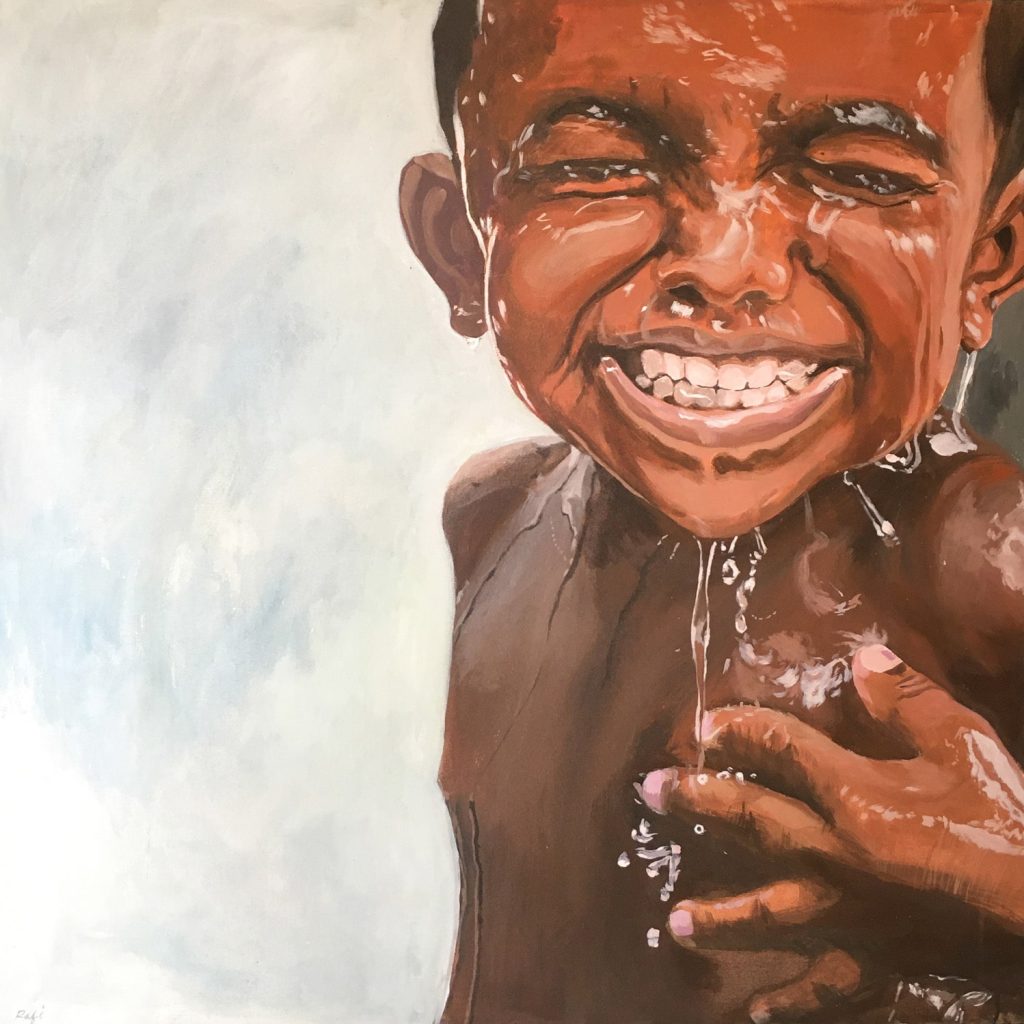
He states, “My first post on my online art page was titled ‘Euphoria’. The response to it was excellent, many collectors were buying my art at a good price. This motivated me to push further and gave me support in my dire financial straits. I then began painting one after another on 5×5 canvases. My whole apartment slowly transformed into a gallery.”
Citing his fascination towards the hyper realistic genre, he notes inspiration from various contemporary hyper realistic painters such as Fabiano Milani and Vladimir Velogov.
“The intricate detailing of Milani’s giant portraits amazed me. Later, Russian realism artist Vladimir Velogov’s brush stroke technique impressed me to great extent. I have from time to time taken instruction from eminent artist Biren. He too is a great inspiration for me.”
The contemporary artist prefers acrylic mediums as “the colour dries quickly and correction in this medium can be done promptly”. He explained that acrylic paints may be applied on any surface including paper, wood/ plastic board, canvas and so forth. Often when he finds himself lacking canvases in his home, he turns to the readily available plastic boards to bring his creations to life.
The BUET graduate identifies his art most with nature, spending time walking through natural sceneries to garner inspiration. Elaborating on his process Mahmud states, “To start off, I think of the subject I will be focusing on, then I do a case study browsing through different artist’s work who have already painted on this subject matter around the world. When I set a reference image, I give significant emphasis on the composition of light and shadow. I then set a base of white on the canvas, then I begin painting. The white base allows the colours to appear brighter and offers a truer hue. I usually work on my art for seven to eight hours a day. It usually takes me one week to complete a large canvas painting.”
At present, Rafee Mahmud is working on landscapes, attempting to capture the “eternal beauty of rural Bangladesh in an impressionist style”. Offering an insight, he advises that in this era of globalisation, everything is within reach and that there is an infinite scope of self-development.




